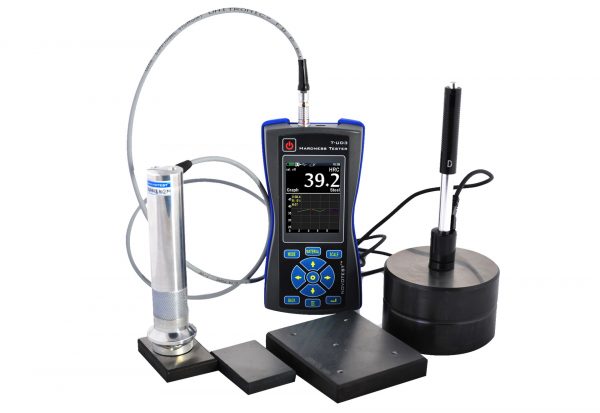Hardness is the measure of how resistant solid matter is to various kinds of permanent shape change when a force is applied. Macroscopic hardness is generally characterized by strongintermolecular bonds, but the behavior of solid materials under force is complex; therefore there are different measurements of hardness: scratch hardness, indentation hardness, and rebound hardness.
Hardness is dependent on ductility, elastic stiffness, plasticity, strain, strength, toughness, viscoelasticity, and viscosity.
Rebound hardness, also known as dynamic hardness, measures the height of the “bounce” of a diamond-tipped hammer dropped from a fixed height onto a material. This type of hardness is related to elasticity. The Rebound Hardness Test measures hardness of materials in terms of the ‘height of rebound of the indenter’ dropped on the materials surface with the help of a special device known as the ‘Scleroscope’. Put in other words, the Scleroscope measures hardness in terms of the elasticity of the material, where the hardness number is dependent on the height to which the hammer rebounds. The harder the material, the higher is the rebound.
Two scales that measures rebound hardness are the Leeb rebound hardness test and Bennett hardness scale.
The Equotip3 metal hardness testers use the dynamic Leeb rebound technique invented by Proceq. Hardness tests according to this Leeb method are particularly quick and easy to perform.




